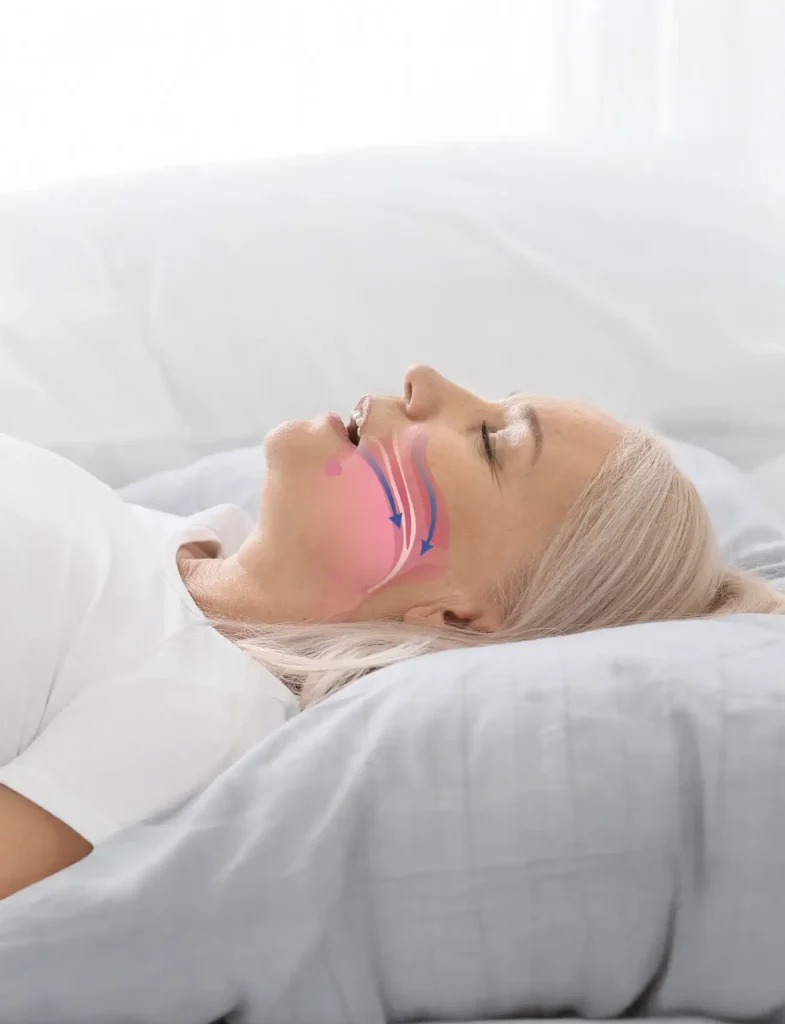Sleep Disorders
The Breath of Life
In the Book of Genesis, it is written:
“And God breathed into his nostrils the breath of life; and man became a living soul.”
Breathing is more than survival — it is life, energy, and
and man became a living soul.” Breathing is more than survival — it is life, energy, and balance. When disrupted during sleep, the body and brain suffer silently
What is Sleep Disordered Breathing?
Sleep Disordered Breathing (SDB) refers to a range of conditions where normal breathing is partially or completely interrupted during sleep. The most common and severe form is Obstructive Sleep Apnea (OSA).
What is Obstructive Sleep Apnea (OSA)?
OSA is a condition where the soft tissues in the throat collapse during sleep, blocking the airway and preventing oxygen from reaching the lungs. This leads to repeated interruptions in breathing throughout the night sometimes hundreds of times resulting in poor sleep quality, oxygen deprivation, and systemic stress.
Common Symptoms of OSA
– Loud snoring
– Witnessed pauses in breathing
– Gasping or choking during sleep
– Morning headaches
– Dry mouth or sore throat upon waking
– Daytime fatigue or sleepiness
– Memory issues or poor concentration
– Mood changes or irritability
Long-Term Health Risks of Untreated OSA
– High blood pressure (hypertension)
– Increased risk of heart attack or stroke.
– Type 2 diabetes.
– Chronic fatigue and burnout.
– Weight gain or difficulty losing weight.
– Depression and anxiety.
– Increased risk of accidents due to sleepiness.
What is Snoring?
Snoring occurs when airflow is partially blocked in the upper airway, causing soft tissues in the throat to vibrate. While often dismissed as a nuisance, snoring may be
an early sign of airway compromise or obstructive sleep apnea.
Causes of Snoring
– Relaxed throat muscles during deep sleep
– Nasal obstruction (e.g., allergies, sinus issues)
– Sleeping on the back
– Mouth breathing during sleep
– Excess tissue around the throat or obesity
When to Be Concerned
Snoring should not be ignored if it’s:
– Loud and regular
– Accompanied by pauses in breathing
– Followed by choking or gasping
– Causing daytime sleepiness or mood swings
How is OSA Diagnosed?
OSA is diagnosed through sleep studies — either in-lab polysomnography or at-home sleep
tests. These assessments monitor breathing, oxygen levels, and brain activity to determine the
severity of sleep disruption.


Treatment Options for OSA and Snoring
Treatment is based on severity and lifestyle, and may include:
• Oral appliance therapy to reposi7on the jaw and open the airway.
• NightLase® laser therapy to tighten throat tissues non-invasively.
• CPAP (Continuous Positive Airway Pressure).
• Weight loss and lifestyle changes.
• Surgical options in more complex cases.
Effectiveness of Oral Appliance Therapy
- Oral appliances reduce snoring in up to 80–90% of patients.
- For mild to moderate OSA, they are effective in **60–80% of cases.
- Patients often report improved sleep quality, reduced fatigue , and higher adherence compared to CPAP.
- Oral appliances are especially helpful for patients who cannot tolerate CPAP or have positional/mild OSA.
Final Thought
Untreated sleep breathing disorders can quietly erode your health, energy, and peace of mind. At TMJ & Sleep Relief Dubai, we help you breathe easier — and live better. Book a consultation today and take the first step toward restful, healing sleep.
